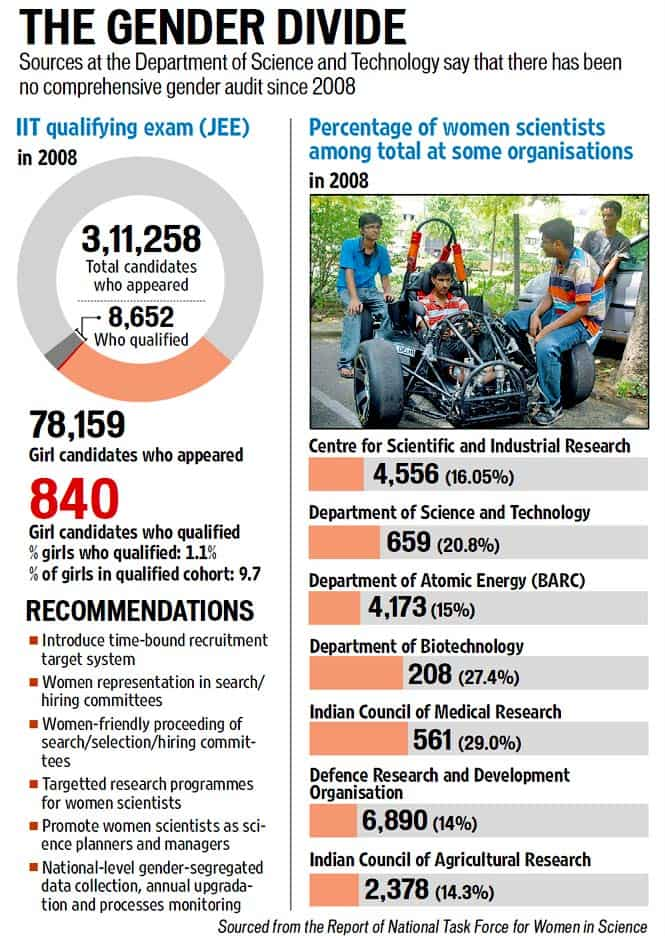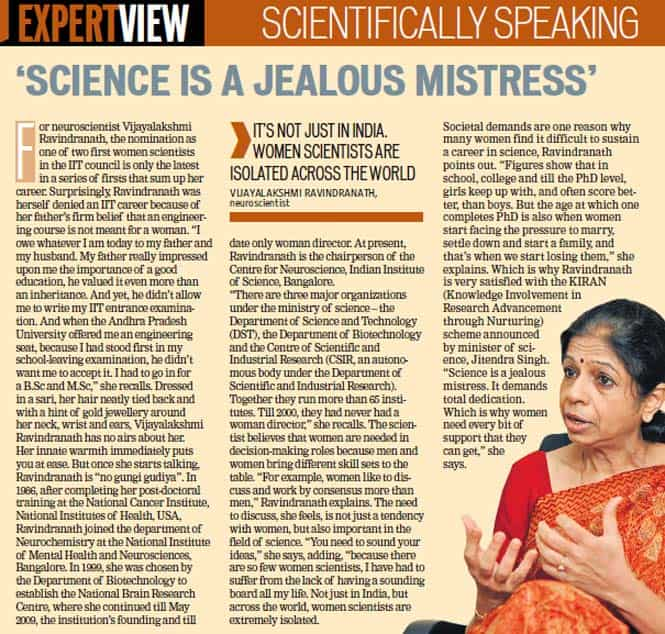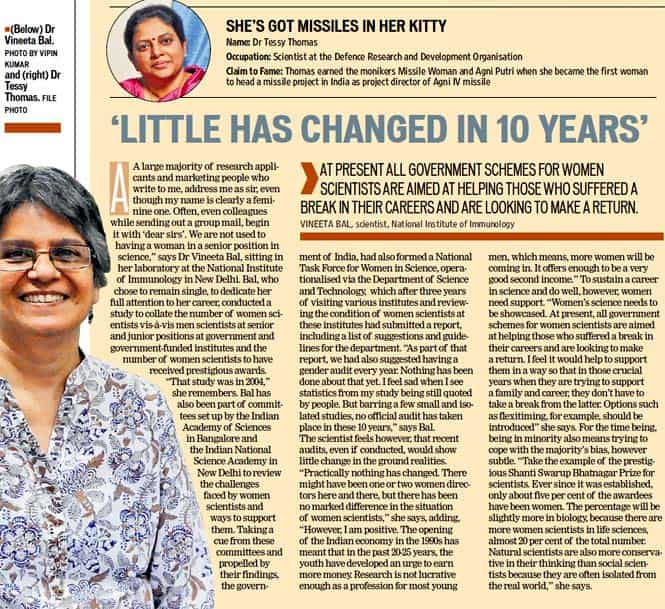The missing women of Indian science
Despite measures to make the fields of science and technology more inclusive, the number of women in top positions remains low.
It offers little scope for display of physical prowess or machismo, yet the arena of science and scientific research is as male dominated as the defence or emergency services. Fresh graduates in recent years, may have swelled the ranks of software developers in information technology firms, but when it comes to core engineering and science, campuses, research institutes and laboratories still remain a boys club, where the few women present are more of an oddity than the norm.


Recently, the Ministry of Human Resource Development attempted to correct the imbalance, by nominating Tessy Thomas and Vijayalakshmi Ravindranath to the Indian Institute of Technology (IIT) Council, the governing body for all 16 IITs. These are the first women scientists to have been nominated to the council. The union minister for science and technology, Jitendra Singh, also announced a fresh scheme titled KIRAN (Knowledge Involvement in Research Advancement through Nurturing) which will seek to bring gender parity in the field of science and technology by creating leadership positions for women. The scheme would look at a mobility mechanism for women scientists who have to change residences due to family compulsions and provide them with feasible employment opportunities. The Department of Science and Technology, one of three major departments under the Ministry of Science (the other two being the Department of Biotechnology and the Department of Science and Industrial Research) already has in place a Women Scientists Scheme. “Many women scientists suffer a break in their careers because of motherhood and family responsibilities. This scheme provides opportunities to women scientists and technologists between the age group of 30-55 years who desire to return to mainstream science and work as bench-level scientists,” explains Dr DR Prasada Raju, scientist-advisor at the Department of Science and Technology. Under this scheme, the department offers scholarships for research in basic and applied science, scholarship for research in science and technology-based societal programs and internship for selfemployment. Additionally, a mentoring programme has been initiated to improve Ph.D standards in engineering institutions in which women scientists and their Ph.D. supervisors participated. “Traditionally, social conditioning has not been in favour of seeing women as engineers. Their number is more in the life sciences. In many southern states, where engineering institutes have 40% reservation for women, the number of women studying engineering is more,” says Dr. Prasada Raju. The department has also been providing support for six Women’s Universities under the CURIE (Consolidation of University Research for Innovation and Excellence in Women Universities) programme since 2009. “We have also started leadership programmes for women scientists, because their numbers are few at the top,” adds Raju. The department’s Annual Report 2013-14, available on its website, mentions that the department received a total of 1037 (plus 300 in Societal Research Fellowship) new proposals from women scientists in this period under the women’s empowerment schemes, of which a total number of 267 projects have been sanctioned. The numbers look encouraging when seen in isolation. But Dr Jyoti Sharma, principal scientific officer, in-charge, science and technology based Societal & IPR Research Fellowship for Women scientists, reveals that of the total scientific manpower in India today, the percentage of women in full-time employment at research and development organisations is only 17%. Also, earlier only 13% of fresh research proposals received in a year would be from women scientists. Today, after a decade of efforts to empower them, the number has gone up to 31%.
Many complain of a gap when it comes to women scientists who have received prestigious awards. According to figures presented in a paper by Dr Vineeta Bal of the National Institute of Immunology, New Delhi, of the total 387 Shanti Swarup Bhatnagar awardees between 1958 and 2004, only eight have been women. Physicist Rohini Godbole feels the only way to ensure recognition for women scientists and boost their presence at the top, is to increase their number at the grassroots level. “We need to stem the leak in early careers for women scientists and realise that the solution to the career-life balance is not only providing ways to come back after a break but to make the passing over the speed breaker for the young ones, manageable,” she says.
A 2008 report of the National Task Force for Women in Science had submitted a list of recommendations to attract and nurture talents to women in science. In addition to an annual gender audit, the task force had suggested introducing time-bound recruitment target systems, having women’s representations in search and hiring committees and promoting women scientists as science planners and managers. Still, six years down the line, while steps have been taken to make science more women friendly (the Department of Science and Technology claims KIRAN will cover most of the taskforce’s recommendations) the glass ceiling is yet to be broken.







